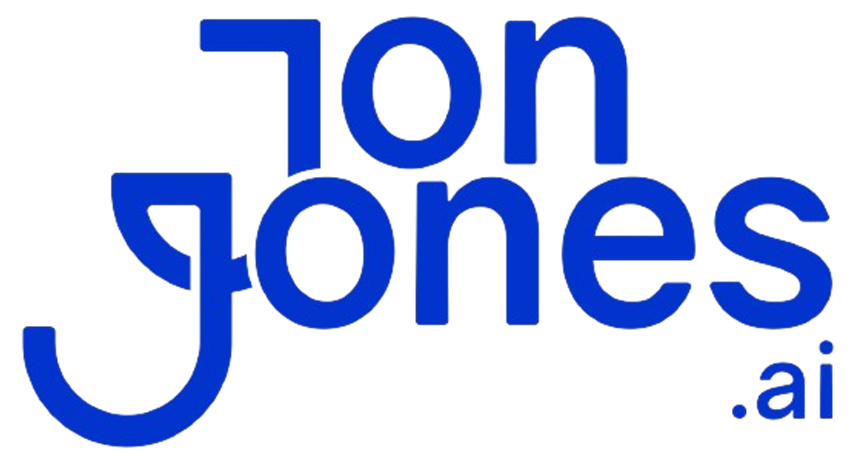Ever feel like your marketing budget leaks away? You throw dollars at ads without a clear roadmap and wonder why conversions won’t budge. Let’s change that.
When you dial in a customer acquisition strategy (a plan for winning new customers), you focus on high-value channels, slash your cost per lead, and spark lasting growth.
Our approach mixes inbound tactics (drawing in leads with helpful content and SEO, which boosts your site in search results) with data-driven choices (letting your numbers call the shots).
Your funnel runs itself, day and night.
Customer Acquisition Strategy Blueprint: Step-by-Step Framework

When you have a clear plan for finding new customers, you zoom in on the channels that matter, cut your cost per lead, and boost your ROI. Without a solid strategy, your budget scatters and conversion rates slip.
We mix inbound marketing (drawing in customers with helpful content and SEO) with data-driven tactics (using numbers to guide decisions). That combo builds growth that compounds over time. And when you fold this into your overall Business Growth Strategy, you turn random wins into steady revenue.
- Pin down your target market and sketch buyer personas (fictional profiles of your ideal customers).
- Do detailed market research (gather info on competitors, trends, and buying habits).
- Craft a unique value proposition (a clear promise of why customers pick you).
- Map out your customer acquisition funnel using the RACE steps (Reach, Act, Convert, Engage).
- Create valuable, audience-first content.
- Build and tweak focused landing pages.
- Set up personalization hacks and automation workflows (rules that send the right message at the right time).
- Launch a dashboard to track marketing ROI (return on investment) in real time.
Getting this blueprint moving starts with uniting sales, marketing, and product teams around the same funnel. Next, we use your buyer personas to craft messages that click, layer in personalization, and set up automation flows that run behind the scenes. Track every step on a single dashboard to watch your ROI live. Regular team check-ins keep everyone aligned, so you can tweak budgets, sharpen touchpoints, and guide leads from awareness to purchase.
Mapping the Customer Acquisition Funnel

Mapping your customer acquisition funnel (the path someone takes from first hearing about you to becoming a customer) helps you spend your budget where it counts and fine-tune each message.
Think of it like a journey map for your customers. Sales and marketing can see exactly where to jump in, from that first hello to repeat orders.
We also build buyer personas (profiles of your ideal customers) so every stage speaks directly to who you’re targeting.
| Funnel Stage | Objective | Key Actions |
|---|---|---|
| Awareness | Build brand recognition | Blog posts optimized for SEO (search engine optimization), social media ads, PR mentions |
| Interest | Engage relevant prospects | Educational webinars, video demos, interactive quizzes |
| Consideration | Qualify high-intent leads | Case studies, comparison guides, free consultations |
| Conversion | Turn leads into customers | Targeted email sequences, limited-time offers, seamless checkout |
| Retention | Encourage repeat business | Onboarding series, loyalty rewards, feedback surveys |
Use this funnel map to see where people slip away and which messages really click. Then we tweak headlines, adjust offers, or try new channels to smooth the path – so you guide more leads into customers and keep them coming back.
Selecting the Right Customer Acquisition Channels for Inbound and Outbound

Let’s kick off by auditing every touchpoint you use, from organic blog posts and email sequences (inbound marketing, where people find you through content) to trade show booths and flyers (outbound marketing, where you reach out first). Track your conversion rates, clicks, and ad spend for each channel. Audit complete? Nice. For small and mid-sized businesses, we lean on a Digital Marketing Strategy for Small Business to score channel performance and set clear growth goals.
Digital channels like SEO (search engine optimization, or how you rank in search), PPC (pay-per-click ads), and social media let us zero in on specific audiences, adjust bids in real time, and watch ROI (return on investment, your revenue minus costs) tick up by the hour. But traditional routes, such as events, direct mail, and local print ads, help build personal connections on the ground. They usually need bigger budgets and longer follow-up, though.
Next, run A/B tests (comparing version A versus version B) on ads, landing pages, and calls to action to see what really moves the needle. Then use that conversion data to pour more budget into top channels and pull back from underperformers. This data-driven loop fuels steady growth and keeps your lead gen strategy agile.
Budgeting and ROI Guidelines for Customer Acquisition

Ever wondered what it really costs to land a new customer? That’s your customer acquisition cost (CAC) (the total you spend to win one buyer). Here’s how we break it down.
How to calculate CAC:
- Tally every marketing expense – team salaries, software fees, ad spend
- Count your new customers in the same time frame
- Divide your total spend by your new customer count
For example, you spend $15,000 on campaigns in a quarter and attract 300 new sign-ups. You get a CAC of $50. Nice.
Plot your CAC over time to spot the cheapest channels. Then switch your budget from pricey spots to the tactics that deliver the best leads.
Next up is return on investment (ROI) (how much revenue you get for each dollar spent). You calculate ROI by dividing your average customer spend by your CAC.
ROI steps:
- Find your average customer spend
- Divide that number by your CAC
- See your revenue per dollar spent
Let’s say a $500 campaign nets 50 customers at a $10 CAC. If each customer spends about $100, that campaign brings in $5,000. You’re looking at a 10× ROI. Boom.
Tracking CAC and ROI together helps you double down on your best campaigns, and pause the ones that underperform.
Now, let’s set up a budgeting timeline. Think of it like planning a road trip with pit stops.
Budget timeline:
- Split your annual budget into quarters or months
- Assign a spending cap to each channel
- Check your ROI every week or month
- If a channel’s CAC climbs above your limit, redirect funds to better performers
This steady, check-in approach keeps your spend predictable and your growth on track. You’ll know exactly when to hit the gas and when to tap the brakes.
Key Metrics and Analytics for Customer Acquisition Success

As we saw in our Budgeting and Return on Investment (ROI) Guidelines, your Customer Acquisition Cost (CAC) shows how much you spend to win each new customer. Now we’ll zoom in on two fresh angles: Customer Lifetime Value (CLV) and Conversion Rate Optimization (CRO).
Customer Lifetime Value (CLV)
Customer Lifetime Value (CLV) estimates how much revenue a single customer brings over their entire relationship with your brand. Segmenting by CLV helps you spot your top buyers and plan smart ways to keep them coming back.
- Segment by how often they buy and how much they spend
- Track first-time buyers versus repeat subscribers
- Compare average CLV across cohorts (groups with shared traits)
Example cohort breakdown:
- One-time buyers – CLV: $120
- Monthly subscribers – CLV: $480
- Seasonal shoppers – CLV: $250
Retention tactics that boost CLV:
- Automated email sequences for abandoned carts
- Loyalty points customers can redeem on their next order
- Personalized product recommendations
We ran a simple three-email re-engagement series, and a mid-size retailer saw a 15% lift in repeat purchases. Nice.
Conversion Rate Optimization (CRO)
Conversion Rate Optimization (CRO) runs small experiments to nudge more visitors into finishing an action, like signing up, buying, or requesting a demo. Advanced tests let you tweak multiple page elements at once.
- Run multivariable tests (headline, image, and button color)
- Use session recordings (screen captures of visitor sessions) to spot drop-off points
- Apply AI suggestions for dynamic content tweaks
Here’s a quick example. Test three headlines, two images, and two button styles in one go. You might find that “Get Started Today” over a clean product shot drives a 20% higher signup rate than your old page.
Leading Analytics and Testing Tools
| Tool | Key Strength |
|---|---|
| Google Analytics | Traffic insights and goal tracking |
| Mixpanel | User cohorts and event-based metrics |
| Hotjar | Heatmaps and session replays |
| VWO | A/B and multivariable testing |
AI and Marketing Automation Tools to Streamline Customer Acquisition

Marketing automation tools (software that automates repetitive outreach) take care of busywork so you can focus on strategy, not spreadsheets.
These platforms track every click and download. Then they send personalized emails based on actions like a whitepaper download, kind of like a 24/7 sales rep in software form.
They also use predictive lead scoring (an algorithm that ranks prospects by their chance to buy). That means we flag high-value leads automatically and move from guesswork to data-driven results.
Our chatbots for lead capture run nonstop, asking smart questions the moment someone lands on your site. We’ll send hot prospects to a live-chat queue or trigger a targeted email blast.
Pair that with a customer relationship management (CRM) system, and every chat transcript and email reply pools into one contact record. Sales and marketing share one view of each prospect’s history, so follow-ups fire off without delay. Bye-bye manual data entry and missed messages.
Next, AI-driven targeting layers predictive analytics (algorithms that forecast trends from past data) onto your ad campaigns and email lists. Tools like Drift or ActiveCampaign analyze past clicks to suggest fresh segments and deliver content at peak engagement times.
We can test dynamic subject lines or landing-page offers based on who your audience is, then watch conversion rates climb. Nice. Add a recommendation engine (software that suggests the next-best offer in real time), and you’ve built an automated engine that scales your acquisition efforts while keeping outreach personal.
Real-World Examples and Templates for Customer Acquisition Plans

A local yard service provider sent geo-targeted flyers (flyers to specific neighborhoods) to middle-income homeowners right when weeds were at their worst. Leads (potential customer inquiries) jumped by 40% in just six weeks.
It worked because the offer hit front doors at peak demand. Nice.
Otter.ai used a freemium model (a product that’s free at first and paid later) that gives you 300 free transcription minutes each month. Curious users signed up fast. Once they saw the value, many upgraded.
Robinhood’s referral perk lets both you and a friend snag free stock worth $5–$200. That perk sparks a social media buzz and turns happy customers into unpaid promoters.
Airtable runs live webinars that tie product demos to real-world workflows. You see the software in action, get your questions answered, and you’re already a qualified lead.
Next, grab a strategy template download to kick off your next campaign or use our acquisition playbook outline to map every step from awareness to conversion.
You’ll also find:
- Marketing roadmap template
- Customer persona guides to nail your messaging
- Competitor benchmarking templates to spot gaps
- Content marketing training modules
Everything lives in our digital marketing toolkit, complete with plan templates and reporting dashboards so you can hit the ground running.
Final Words
We jumped into a step-by-step customer acquisition strategy blueprint, showed you how to map your funnel stages, pick inbound and outbound channels, and set budgets with ROI in mind. We also explored key metrics, AI-driven tools, and real-world case studies.
Now it’s your turn to bring this framework into your own business. Follow these steps, measure what matters, and refine as you go. With a solid customer acquisition strategy in place, you’ll scale faster, save time, and see real growth.
FAQ
What is a customer acquisition strategy and framework?
The customer acquisition strategy defines an ongoing plan to attract and win new customers. Its framework often covers target profiling, market research, value proposition, funnel mapping, content creation and analytics.
What are the three parts of customer acquisition?
The three parts are planning your target profile, executing multichannel outreach, optimizing campaigns based on analytics.
What are the four stages of customer acquisition?
The four stages trace the funnel steps: awareness triggers brand discovery, interest sparks engagement, consideration qualifies leads, conversion turns prospects into customers.
Which strategy works best for customer acquisition?
The best strategy tailors your value proposition to a defined buyer persona, uses data-driven channels, tests messaging and refines campaigns for steady growth.
How do you create a customer acquisition plan or process?
Creating a customer acquisition plan involves defining your ideal customer, researching market trends, mapping a multichannel funnel, producing valuable content, optimizing landing pages and tracking KPIs.
Where can I find templates, examples, PDFs or PPTs for customer acquisition strategy?
Many marketing sites, including our resource library, offer free strategy templates in PDF or PPT formats along with real-world examples for quick customization.
How should startups approach customer acquisition?
The acquisition strategy for startups often focuses on lean experiments, targeting early adopters, leveraging referrals and low-cost channels, then iterating based on customer feedback and performance metrics.





